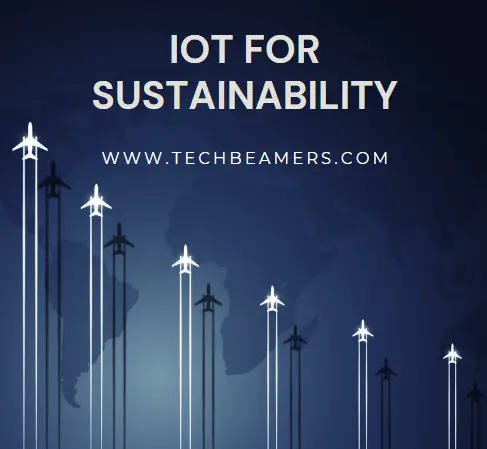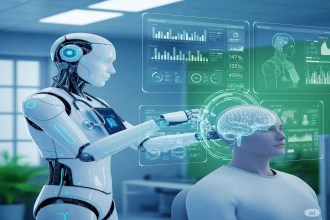The use Internet of Things (IoT) has seen a big growth in 2025. The future of IoT is far greater than you think. You’ll see more AI and automation in smart cities, changing how we live and work. Here are the 7 biggest IoT trends that are shaping the future of IoT right now.

IoT is slowly making many things work in a smarter way across different fields. In factories, small devices check machines to see if they are working well or need fixing. In hospitals, smart tools help find where patients are and let nurses know if someone needs care. On roads, traffic systems use live data to stop long waits and move cars better. In the energy world, IoT helps watch how much power we use and stops it from being wasted. These quiet changes make work faster, safer, and easier without most people even noticing.
Future of IoT and Its Trends
IoT devices are already helping in people’s life. We use them to control power, check health, and enjoy music or games. Smart thermostats can predict the room temperature we like and change it. Smartwatches can detect our heart rate, track sleep, and steps. Speakers have become intelligent to play music, switch lights on or off, and answer a few questions. These tools use logical thinking to make life easier, more fun, and more comfortable.
Must Read: Do You Know the Difference Between ChatGPT and GPT-4
IoT is still pretty new, but it’s growing fast. With its fast pace of growth, we’ll get to see more amazing ways it can make life easier, smarter, and better.
While we move into the future, it’ll remain a key to keep an eye on IoT trends. They’re going to change how many industries work and make daily life easier for all of us.
1. 5G Technology
5G is the next big step in wireless tech, and it’s going to boost IoT in a big way. It’s much faster and smoother than older networks, which means smart devices can work better and do more cool things we haven’t seen before.
Thanks to 5G, lots of devices can connect all at once without getting slow. This helps cities work better, lets factories use clever machines, and makes things like self-driving cars and smart glasses run smoothly. It’s like giving smart technology a powerful upgrade to do bigger things.

2. Edge Computing
Edge computing is a top trend in the Internet of Things. It means having small computers close to where data is made, so things work faster and better. This helps IoT by cutting delay, making devices run smoother, and using less internet data.
By processing data near to the source, edge computing will have fewer data to sent to centralized servers.

This will not only reduce the data transmission costs but also improves reliability in real-time applications. Using a bandwidth planning tool can help specialists estimate data loads and make informed decisions about which processes to offload to the edge.
In 2025, we can expect to see more and more IoT devices equipped with edge computing capabilities. This will enable IoT devices to process data and make decisions in real-time, without having to send data back to a central cloud server.
For example, edge computing enables smart city applications such as traffic management and air pollution monitoring. It can also enable industrial automation applications such as predictive maintenance and quality control.
3. AIoT
AIoT is one of the path-breaking Internet of Things trends. It is the convergence of artificial intelligence (AI) and the IoT. AI would train IoT devices to learn from data and make decisions autonomously.
This has the potential to revolutionize the way we interact with the world around us.
For example, AIoT can transform homes that can learn our preferences and adjust the environment accordingly. It is a major step towards smart cities that can optimize traffic flow and reduce energy consumption.

In 2025, we can expect to see more and more “AIoT” devices and applications emerge. AIoT has the potential to transform every industry and sector, from healthcare to manufacturing to transportation.
4. Digital Twins
Digital twins are digital copies of real things or systems that help us see how they work and find ways to make them better. They let companies check their ideas and fix problems without making real things first.
This saves time and money, and helps machines run smoothly. By 2025, many more companies will use digital twins to improve their work and make better choices.
Digital twins help transport companies find the best routes and times for their vehicles, saving fuel and time.

In health care, these digital models allow doctors to plan treatments made just for each patient. This smart use of digital twins helps both travel and health care work better and faster.
5. Voice-Activated IoT Devices
Voice-activated IoT devices are devices that establish control via voice commands. It is one of the rapidly growing Internet of Things trends.
Such a type of devices are becoming increasingly popular, as they offer a convenient and hands-free way to interact with our devices.
In 2025, we can expect to see more and more voice-activated IoT devices emerge.
Voice-activated IoT devices can control a wide range of devices, including smart thermostats, smart lights, and smart speakers.

Voice-activated IoT devices are also becoming more intelligent, and they are able to understand and respond to complex voice commands. This makes them even more convenient and useful.
6. IoT Security
As the IoT continues to grow, so too do the security risks associated with it. IoT devices are often vulnerable to attack, and a successful attack on an IoT device could have serious consequences.
In 2025, we can expect to see more and more organizations taking steps to improve the security of their IoT devices.
This will include measures such as implementing strong authentication and encryption, and regularly updating firmware.

Organizations should also be aware of the latest IoT security threats and vulnerabilities. This will help them to take steps to protect their IoT devices from attack.
7. IoT for Sustainability
Sustainability isn’t just a fancy word—it’s something the whole world needs to care about. In time, smart IoT devices will really help with this. They’ll be used in many areas to save energy, reduce waste, and take better care of the planet.
In future, buildings will use IoT to get really smart about energy. They’ll know when to turn lights or systems on and off, so nothing gets wasted. This will help cut down pollution and make the planet a little cleaner.

In farming, smart IoT tools will help grow food using just the right amount of water and fewer chemicals. This means healthier crops, less waste, and farming that’s better for the Earth.
Furthermore, IoT-enabled supply chain monitoring will promote responsible sourcing and minimize waste. The integration of IoT into sustainability practices is an encouraging step towards a more eco-conscious future.
Also Read: Top 20 ChatGPT Alternatives You Must Try
How to Stay Ahead with the Future of IoT
IoT can help make the world better if we use it the right way. It’s good to buy devices from trusted makers and keep them safe with strong passwords. We should also know what information these devices take and how it’s used. Picking devices that save energy helps the Earth. Using IoT for good causes can help many people. Doing these things will make IoT safer, smarter, and better for everyone.
It’s very important to keep IoT devices safe and make sure the data they gather is only used to help everyone. Here are some easy steps to use IoT in a smart and fair way:
- Choose devices from brands you can trust.
- Always protect your devices with strong passwords.
- Learn what information your devices collect and who can see it.
- Pick devices that use less energy and help protect the planet.
- Use IoT to support good causes and improve communities.
By following these tips, we can ensure that the IoT creates a better future for all.




